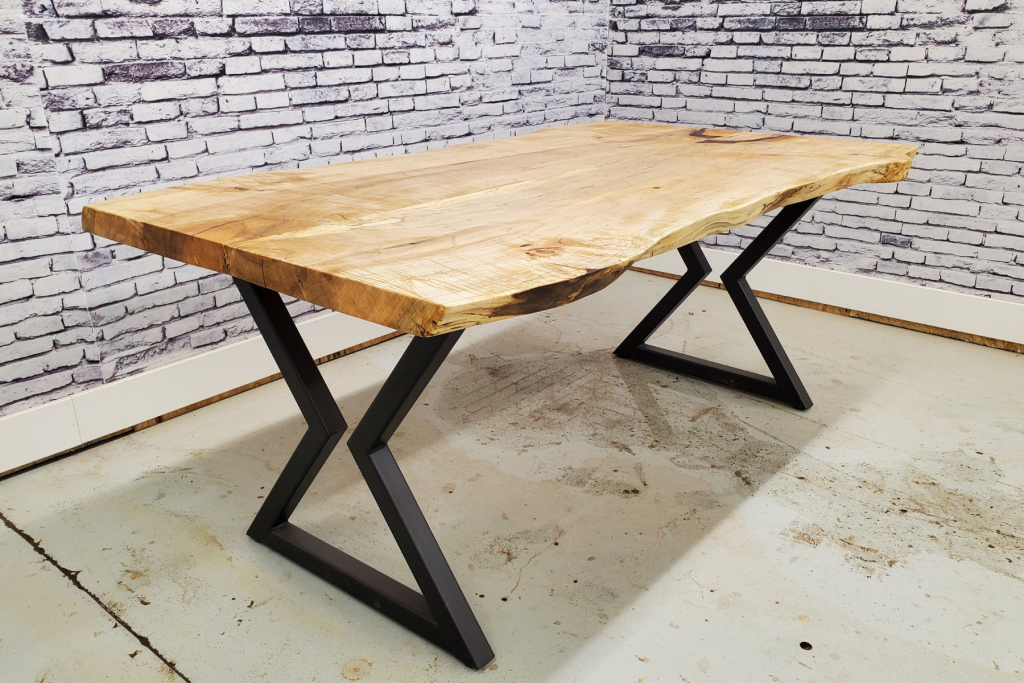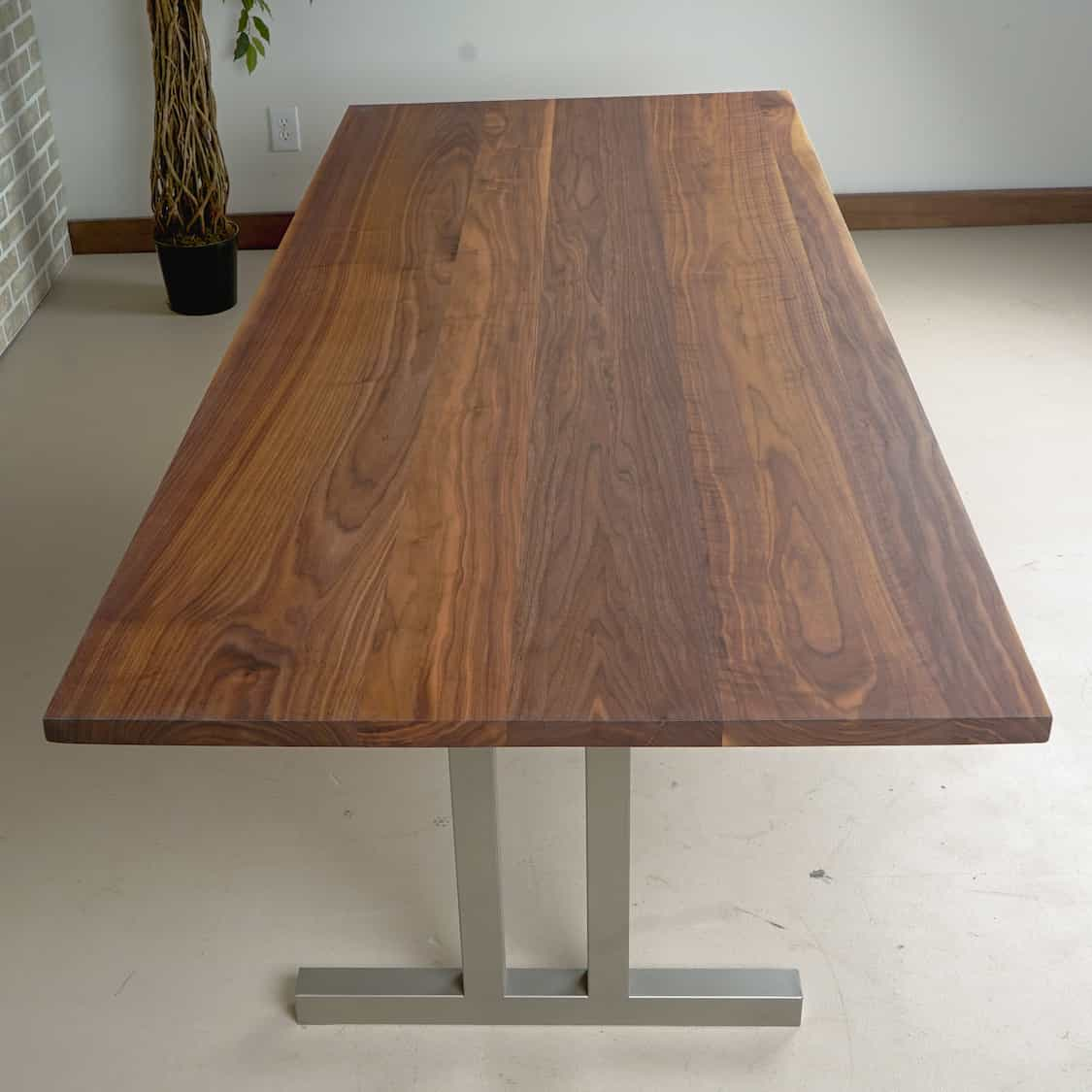Add a Rustic Touch to Your Table with Classic Dining Table Legs Wood
Wiki Article
What to Think About When Picking Table Legs Wood for Your Home.
When choosing timber for dining table legs, a number of vital elements require cautious consideration to make sure both performance and visual allure. The type of timber picked can considerably influence the table's longevity, security, and total style, while the upkeep needs may impact long-term use.
Significance of Timber Type
When selecting dining table legs, the option of timber kind plays a crucial duty in identifying both visual appeals and longevity. Different timber types offer varying degrees of resistance, stamina, and weight to wear, which can considerably influence the functionality and durability of the table. Woods such as cherry, maple, and oak are typically liked for their robust nature and ability to stand up to day-to-day use. These woods not just give structural honesty yet also withstand scrapes and dents much better than softer options.Alternatively, softer timbers like poplar or yearn, while much more economical, may not provide the exact same degree of durability and may need more regular maintenance or replacement. The wood kind additionally affects the table's capacity to sustain ecological variables such as moisture and temperature fluctuations. Moreover, the selection of wood can influence the simplicity of completing and staining, which can be essential for attaining the desired appearance.
Visual Considerations
The visual charm of eating table legs considerably contributes to the general aesthetic of the dining area. Dining Table Legs Wood. When picking timber for dining table legs, the grain surface, pattern, and color are crucial aspects that can improve or detract from the room's layout. Various timber types exhibit varying hues and structures; for example, oak provides a timeless look with famous grain, while walnut uses a rich, dark sophisticationAdditionally, the form of the legs plays a critical duty in defining the table's character. Smooth, minimalist legs can create a modern feeling, while much more elaborate, turned legs evoke conventional charm. The style of the legs must balance with existing furniture and the overall motif of the room, whether it be rustic, modern, or transitional.
It is additionally vital to think about exactly how the legs interact with other furnishings items, consisting of chairs and sideboards. A natural design not only elevates the eating experience yet also adds to the home's total visual coherence. Eventually, the selection of table legs must be a thoughtful choice that shows personal preference while making certain visual harmony within the room.

Sturdiness and Stability
Toughness and stability are essential consider the choice of table legs, as they directly influence the long life and security of the furnishings. When selecting timber for dining table legs, one should consider the integral properties of numerous timber kinds. Hardwoods, such as cherry, maple, and oak, are commonly preferred for their strength and resistance to put on, making them suitable for high-traffic dining locations.In enhancement to the sort of wood, the building and construction method likewise plays a significant role in the overall security of the table. Legs that are well built, either through typical joinery strategies or modern engineering techniques, will certainly offer enhanced support and prevent tottering. It is necessary to evaluate the density and design of the legs; thicker legs are usually a lot more secure and can endure try here higher weight.
Furthermore, the environmental conditions in which the eating table will be used can affect toughness. Timber that has actually been properly treated for moisture resistance will certainly execute much better in damp settings. Ultimately, choosing the right combination of durable wood and stable building and construction will certainly make sure that your table stays a safe and practical centerpiece in your house for many years ahead.
Maintenance Needs
Selecting table legs made from sturdy timber is just the beginning; understanding maintenance requirements is equally essential to maintain their appearance and functionality. Different wood types require differing degrees of care, so it is necessary to recognize what is needed for your specific selection.Routine cleaning is essential; utilize a soft, wet cloth to eliminate dirt and particles. Avoid harsh chemicals that can damage the coating. For wood finishes like varnish or lacquer, regular polishing with furnishings wax can enhance luster and offer a safety layer against scratches.
Preventative actions are crucial (Dining Table Legs Wood). Usage placemats click site and coasters to stay clear of direct call with wet or hot items, which can warp or stain the wood. Additionally, consider placing felt pads under the legs to avoid scratches on your floor covering and decrease wear on the timber
Humidity control is one more significant variable; maintaining a stable environment helps to avoid warping and breaking. If your dining location is susceptible to fluctuations in temperature and dampness, take into consideration utilizing a humidifier or dehumidifier as needed.
Spending Plan and Cost Factors
When planning to purchase dining table legs, comprehending spending plan and cost variables is necessary to make a notified decision. The sort of wood chosen for the legs considerably influences the overall rate. Hardwoods, such as oak or walnut, tend to be a lot more pricey than softwoods like yearn, because of their resilience, aesthetic allure, and scarcity. Furthermore, take into consideration whether you are deciding or buying pre-made legs for customized layouts, as personalization frequently sustains higher costs.Labor and workmanship likewise play an essential duty in the general cost. Handmade or artisan-crafted legs might bring a costs cost, mirroring the ability additional resources and time purchased their production. It's critical to evaluate the balance between high quality and cost; spending more in advance can bring about a longer-lasting product that calls for less maintenance over time.
Final Thought
In recap, choosing the ideal wood for dining table legs requires mindful consideration of different aspects, consisting of wood kind, aesthetic appeal, longevity, upkeep, and budget constraints. The choice of woods such as oak and maple can improve both strength and visual charm, while softer woods might be more cost-effective but less long-lasting. Ultimately, a well-informed decision regarding material option will certainly add to the general functionality and longevity of the eating table, guaranteeing an important investment for the home.When picking timber for eating table legs, a number of important elements warrant mindful consideration to make sure both performance and visual charm.When selecting eating table legs, the selection of wood type plays an important role in establishing both appearances and toughness. When picking wood for eating table legs, the grain finish, pattern, and shade are essential components that can boost or take away from the space's style. When choosing wood for dining table legs, one must take into consideration the inherent residential or commercial properties of different timber kinds.In summary, choosing the ideal wood for eating table legs demands cautious consideration of different aspects, including wood type, aesthetic appeal, budget plan, longevity, and upkeep restraints.
Report this wiki page